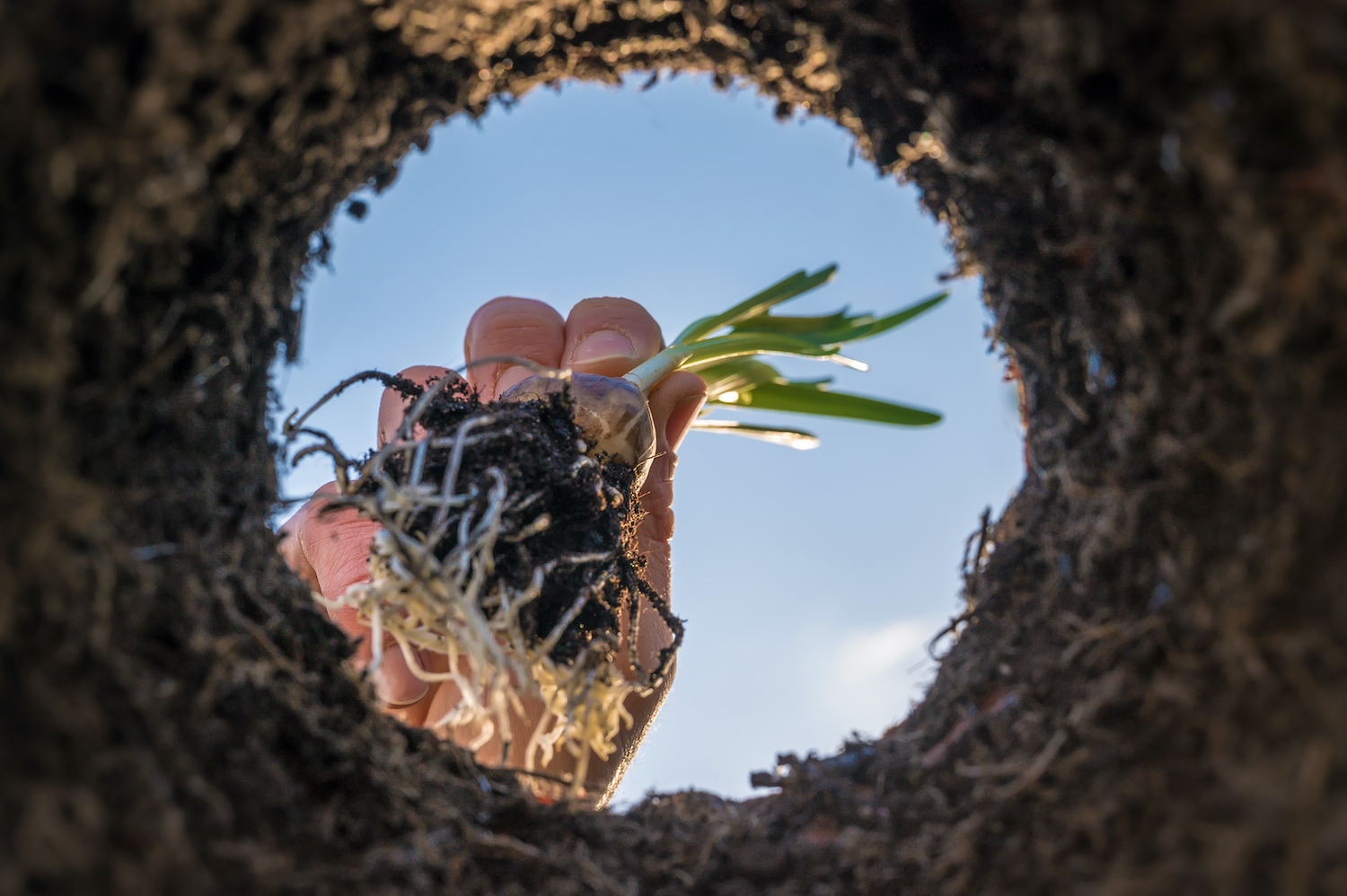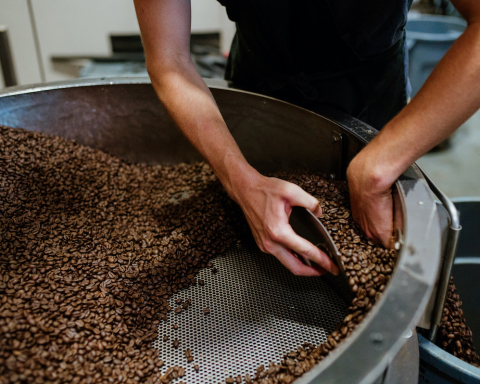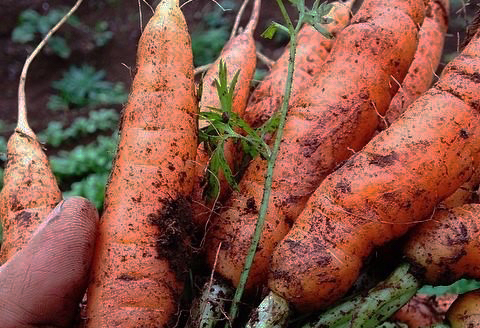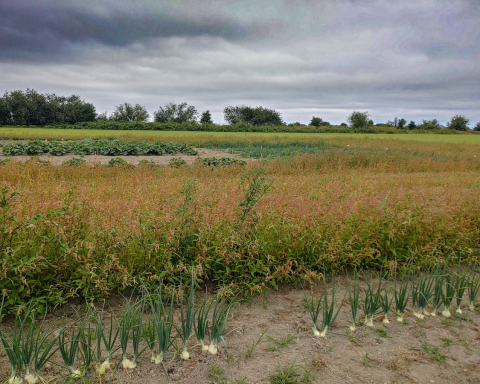Microbially Friendly Farming
By Dr. Judith Fitzpatrick
[Originally published in Heart & Soil Magazine]
Imagine that you were intelligent enough to diagnose a disease, prescribe the correct antimicrobial, and manufacture it.
Plants with a healthy microbiome do this!
The plant and microbes work together to perform this miracle.
Organic farmers need 97% less of any kind of pesticide than those using mineral fertilizers. Mineral fertilizers are genocidal for the soil microbes that protect the plant from pathogens and adverse conditions, produce nutritionally-deficient food, and pollute the environment.
Plants Send Signals for Microbes
In regenerative organic farming, which we will refer to as Microbially Friendly Farming (MFF), the plant secretes approximately 30% of its photosynthate to generate the specific microbial population that it requires for nutritional needs and health.
The major stimulation for the plant to build this population is the plant’s hunger for the N, P, K (nitrogen, phosphorus, potassium), and other soil minerals that the microbes can deliver. When the plant is provided mineral N, it does not nourish this microbial population, and the plant loses the ability to protect itself from pathogens and stresses such as drought.
Microbially Friendly Farming
From here forward we will use the word plant to refer to a plant that has not been poisoned by a high mineral fertilizer regimen and has developed a healthy microbial population. We will use the term Microbially Friendly Farming (MFF) to refer to agricultural practices that maintain microbial populations above 250 µg (one-millionth of a gram), microbial biomass carbongram of soil and a F:B (fungi:bacteria) ratio above 0.5.
Microbes Support Each Other
The microbial population in the rhizosphere is controlled by the organic molecules that the plant exudes and the nutrients available in the soil. Microbes are the pickiest of eaters. They can only dine on very special diets and require the support of a population of other microbes that supply some of their dietary needs. This is why we can only grow about 1% of soil microbes in the lab – we know about the other 99% because we can detect their DNA, see them microscopically, and measure some of their metabolism.
Healthy Plant, Healthy Seed
Like us, plants receive their initial microbiome from the seed of the mother plant which are as important in establishing a healthy microbiome for the plant as they are for us – e.g. children born by caesarian birth have different microbiomes than those born vaginally and have immune deficits that are attributed to not being inoculated with their mother’s vaginal and fecal microbes.
Microbes Stimulate the Immune System
The microbial population in the rhizosphere descends from the seedling population and expands with plant/root growth and recruitment from the surrounding soil. The seedling feeds the microbes with root exudates and the microbes send chemical growth molecules to stimulate plant growth. Hence these microbes are called plant growth promoting bacteria. As with humans, the overall health of the plant is a critical component of disease resistance.
The interaction between the microbes and the plant is very similar to how the microbes in our guts stimulate our immune system, which also doesn’t develop in the absence of microbes.
Cells that Respond to Infection and Pathogens
Microbes enter the plant through root tips via a process called rhizophagy. The plant extracts 40% of the N it requires, as well as other nutrients, before it releases these microbes back into the soil via root hairs. Some of these microbes enter the plant’s circulation system and interact with receptors that appear on all plant cells, called Microbe Associated Molecular Patterns (MAMPS), which recognize and bind to common structures on the surfaces of microbes. This binding leads to an intracellular molecular chain reaction that stimulates the cell to produce more MAMPS and many protective antioxidants. Thus it produces a cell that is more alert to microbes and is more prepared to respond to infection.
In addition to MAMP receptors, the plant has Pathogen Associated Molecular Patterns (PAMPS), that recognize and bind to structures that are unique to pathogens. Binding to a pathogen receptor stimulates the cell to make more PAMPS, making the plant both more sensitive to the pathogen and causing the plant to produce large amounts of antioxidants that are harmful to pathogens. This sometimes causes the cell to commit suicide (apotosis) to save the spread of the disease.
Making Specific Antibiotic
This exposure to pathogens also stimulates the plant root to increase the production and secretion of the foods that attract the microbes that make the antibiotic that combats the particular pathogen.
The microbes making this antibiotic then multiply in the root area making the antibiotic available to the plant. Thus with MFF, a plant in partnership with microbes develops a strong immune system by upping the number of MAMPS and PAMPS and is more resistant to disease and requires much less pesticide.
Thousands of Essential Nutrient Antioxidants
Perhaps the biggest wins for MFF are that the thousands of essential nutrient antioxidants produced by these plants provide protection against cancer, inflammation, and disease in our bodies, and they are what give fruits and vegetables good texture and flavor leading to better eating habits. These thousands of essential nutrient antioxidants are not plentiful in conventional farm produce and are not currently listed as nutrients by the USDA.
Microbes also stimulate the production of Damage Associated Molecular Patterns (DAMPS), which recognize and bind components of damaged cells, especially those of leaves, and promote healing. Moreover, it has been demonstrated that the chemical odors produced by these damaged cells are specific to the insect causing the damage, and these plant-produced odors attract insects that antagonize the attacker.
Microbes make antimicrobials in large part to protect their territory from other microbes. So the microbes surrounding your plant are big defenders against pathogenic soil bacteria, e.g. good nematodes are the best protectors against pathogenic nematodes.
Defensive Fungal to Bacterial Ratio
Interestingly, it has also been observed that a proper fungal to bacterial ratio results in a bacterial population that is more prepared to defend itself from predators. The proper ratio varies depending on soil and crop. For agricultural crops, it is usually between 0.4 and 1. The proper ratio also tells you that you are not decreasing your soil fertility (organic carbon).
Mycorrhizal fungi that colonize approximately 90% of all plants are fungi that are totally dependent on the plant for nutrition. A plant root exudate awakens the fungal spore – which has only a day to grow to the plant where it enters a cell and is fed. When established, the fungi sends out hypha to collect P, N, K, S (sulfur), and water, which it brings back to the plant cell and trades for carbon and amino acids. The fungal hypha of a colonized plant can increase the root area as much as 1000%, making significantly more water and nutrients available.
Immunity Network
The hypha are also able to form a network connecting trees and are known to send immune signals from diseased trees to other trees in the network that increase their resistance to the disease. These fungi also very efficiently protect plants from drought by modifying the root structure, allowing it to absorb more water. Protecting a plant from the stress of drought makes a plant more disease-resistant, as well as increasing yield.
The soil microbial community and economy has thrived for 3 billion years. It has checks and balances and has adapted to soil and water conditions all over the globe.
Like our own society, it contains opportunists that take advantage when a defense system is poor, or society is weakened.
Healthy Microbial Biomass
The current best indicator of a healthy soil microbial community is a healthy microbial biomass and F:B ratio: it tells the nutrient level and nutrient balance of the soil and can indicate if it is improved. It provides information that chemical tests cannot, e.g. most soils have plenty of P, but it is in a form that only fungi are able to make available to the plant. It tells you N is low, but it doesn’t tell you that MFF can increase the number of microbes that can deliver N and fix N from the air.
Financial, Environmental, and Health Benefits of Healthy Soil
As you can imagine, creating and maintaining a healthy immune system requires plant energy which is probably why the yields of MFF practices are on average about 10% less than those of mineral fertilized farming. However, studies show that when microbially friendly farming is optimized, the financial loss is compensated for by tastier, more nutrient dense produce, lower fertilizer, water, and pesticide costs, and better resistance to drought.
Increase financial return by building soil structure which increases the water-holding capacity which decreases erosion and water costs, increases drought resistance, and increases soil carbon which has been shown to increase yields, and, over time, decrease fertilizer needs. With the maturation of the soil carbon markets, growers can contribute to farm income by selling carbon credits.
Understanding the plant health microbial synergy is even more critical now that the cost of mineral N is up as much as 400% and pesticides costs are also rapidly rising per the USDA- Economic Research Service.
Microbially Friendly Farming controls plant pathogens and increases plants’ ability to withstand stress. Plants are fully equipped to diagnose a disease, prescribe the correct antimicrobial, and manufacture it. They simply need a healthy microbiome to interact with microbes in healthy soil.
Dr. Judith Fitzpatrick, Ph.D., Prolific Earth Sciences Founder and Principal Scientist, is a microbiologist and a recognized leader in the development of on-site diagnostic tests. She was the founder and CEO of Serex from 1985 until its sale to a Canadian Pharmaceutical Company in 2002. At Serex, she developed more than 15 medical diagnostic tests with unique reagents and methods of testing.
Judy combined her expertise in diagnostic testing and manufacturing with her profound belief in the mission to help improve farming practices.









